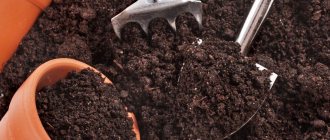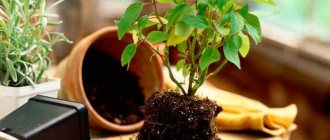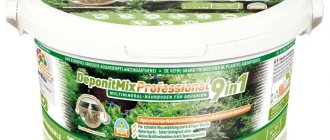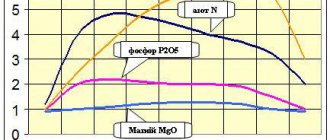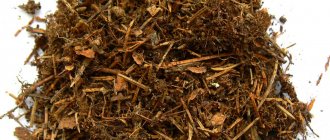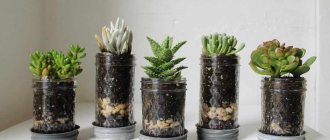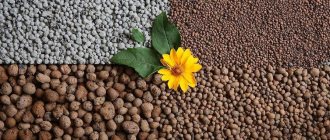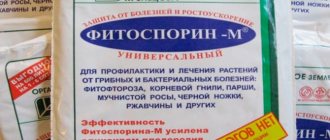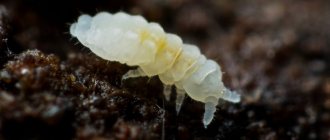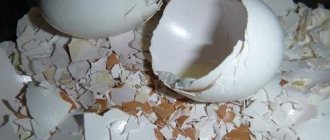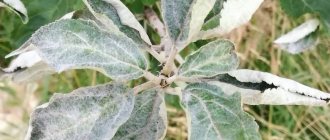Acidic soils adversely affect the growth and development of many plants. They especially dislike beets and cabbage, as well as onions, garlic, lettuce, cucumbers, peppers, etc. The growth and branching of roots of these vegetables deteriorates, and productivity decreases.
Usually, soil deoxidation is done in the fall or spring before planting, so as not to harm the plants. But there are several ways to do this in the summer. During this period, you can deoxidize the soil with dolomite flour, gypsum, ash or eggshell flour; planting green manure will also help. However, before you get started, you need to find out what the acidity of the soil is in your area.
The better soil prepared at home
Many people prefer to buy soil for indoor plants in stores. But you can create it yourself. In this case, the mixture will have the following advantages:
- the ability to follow the exact recipe, adding exactly as many substances as required by a certain type of plant;
- adaptation of seedlings to the new composition is much faster;
- allows you to save money.
Soil mixture recipe at home
Despite the advantages, there are also disadvantages. There is a high probability of infection of an indoor flower with fungi or diseases. To avoid this, it is necessary to pre-treat the soil components.
How to properly prepare the soil mixture
Pests of indoor plants and diseases of indoor flowers
An alternative to purchased soil mixture is homemade soil for indoor plants. Natural soil has excellent qualities for the development of indoor plants, but requires some preparation. You need to understand the care requirements of your favorite flower, planting features and make a mixture with your own hands.
Main components
Soil for indoor flowers consists of three main components: soil, sand and peat. Each of the listed ingredients has a specific function:
- peat is responsible for the level of acidity;
- sand loosens the soil, thereby reducing its density.
In addition, other components are added to the soil, the amount of which depends on what kind of plant will be planted in it. Eg:
- vermiculite and agroperlite are responsible for aeration;
- dolomite flour will reduce acidity;
- saprogel and vermicompost enrich the soil mixture with microelements;
- tree bark loosens the soil and prevents it from overheating.
The components of the mixture must be mixed in the correct proportions
How to disinfect soil for indoor plants
Ready-made mixtures sold in stores undergo special treatment to prevent the occurrence of diseases or pests. If the soil for home flowers was prepared with your own hands, then carry out measures to disinfect it yourself.
Bacteria and fungus are destroyed using the drug phytosporin. When exposed to it, pathogenic microflora is destroyed, and the soil is enriched with beneficial microorganisms that it contains.
For your information! Analogues of phytosporin are gamair and alarin.
Thermal soil treatment
The mixture can be disinfected by increasing the temperature. To do this, you need to either heat it in the oven, or freeze it on the balcony in winter. The last method does not provide a 100% guarantee. Weeds and larvae of harmful insects may remain in the soil. Heating in the oven is more reliable, but labor-intensive. The soil is placed on a baking sheet, sprayed with water and heated in the oven to 120 °C. Leave for at least 1 hour. Throughout the entire time, the soil is constantly mixed. The disadvantage of this method is the fact that along with the pests, a number of beneficial bacteria are destroyed - the soil mixture loses half of its properties.
Let's summarize
- Determining the acidity of the soil in a vegetable garden, garden or flower garden is very important - in soil with too high acidity, the yields are lower and the flowers are worse.
- You can check the acidity using the rustic method (by noticing which weeds take root in the area - moss loves acidic soil the most), or by purchasing a set of litmus papers.
- You can deoxidize the soil by adding fine lime, wood ash, dolomite flour, and chalk when digging or plowing. Also not radically, but still, timely sown and dug green manure will help improve the acidity of the site.
Sometimes people confuse acidic and alkaline soil, clay and sandy soil. This video will help you finally understand the types of soils.
Main types of soil
The soil for each indoor plant must meet certain requirements. This is why experienced gardeners do not recommend using a universal type of soil. Some plants prefer loose soil, others thrive only in a nutrient medium. Based on this, it is necessary to understand what types of earthen mixture there are.
Light, medium and heavy earth mixtures
Why do the leaves of indoor flowers turn yellow - what to do?
The composition of the substrate is divided into several types:
- lungs;
- average;
- heavy.
The light mixture includes 40% peat, 15% garden soil, 5% leaf or turf soil, 40% sand. In addition, it is necessary to add additional components: agroperlite, vermiculite, charcoal, fine expanded clay. The light mixture is ideal for the following indoor plants:
- desert cacti;
- succulents with thickened leaves.
To root cuttings with a weak root system in a pot, light mixtures are also used, but during growth it is necessary to periodically fertilize additionally.
For the average mixture the following components are required:
- peat - 30%;
- garden soil - 25%;
- leaf or turf soil - 15%;
- humus - 5%;
- sand - 25%;
- vermiculite and charcoal as additional components.
Medium soil mixtures are considered universal. Suitable for palm trees, some types of succulents, and decorative foliage indoor plants.
Note! If in doubt about the selection of soil for your flower, it is better to loosen it a little by adding the appropriate components.
To obtain heavy soil mixtures, you need to take 35% of peat, 25% of soda soil, 20% of leaf or turf soil, 10% of sand, 10% of humus. Additional components include wood bark, pine needles, sphagnum, and charcoal. Heavy soil mixtures are prepared for the following types of house plants:
- tropical palms;
- vines;
- ferns;
- azaleas;
- begonias;
- fuchsia;
- tropical cacti.
Large plants with a well-developed root system are also planted in heavy soil.
Most of the ingredients in the mixtures can also be prepared independently.
Humus soil
Compost or humus soil is obtained from animal manure. Horses and cows usually provide good material. It is placed in a compost pit or simply on a heap, well covered with darkened oilcloth and kept in this state for 2 years. Then the resulting raw materials are sifted.
Note! If the humus is of high quality, then its structure is loose and homogeneous. There are no lumps in it, and especially the smell inherent in manure.
Sod land
To obtain turf land, it takes 2 years. In the spring and summer, meadow or field turf is cut. Then, in a certain place, they are stacked in layers with manure. After a certain time, the earth is sifted and placed in tight bags. If there is no turf soil, then when collecting the soil mixture, it can be replaced with mole soil or garden soil enriched with fertilizers.
Coniferous land
Coniferous soil can be collected from a pine or fir forest. Bottom layers are suitable. At home, coniferous soil is prepared in this way:
- collect fallen pine needles;
- in a compost pit, lay them in layers with peat and sand (layers 15-20 cm thick);
- withstand about 2 years.
Coniferous land
Leaf ground
For leaf soil, it is necessary to collect fallen leaves of different tree species. They are especially valued from apple, ash, and linden trees. It is not recommended to take leaves of oak, willow, poplar, and chestnut. The collected leaves are poured into compost pits, sprinkled with slaked lime.
Sand
Sand is mainly used as a drainage material. With its help, oxygen access to the root system of the plant is ensured. This is an essential element of any type of soil mixture. For house plants, it is recommended to take river sand, but it must be well washed beforehand.
Peat
Peat is usually purchased at flower shops. It is prepared and packaged in production. No additional measures are required with it. Peat brought to summer cottages as fertilizer is not suitable as a component of the soil mixture for planting indoor flowers. It must be kept for some time. Only after it turns into a homogeneous and granular substance is it used for substrates.
Peat for green spaces is used that is well weathered and decomposed.
Soil acidity
Soil for gloxinia - what kind of soil is suitable for a flower
The suitability of the substrate for indoor plants is characterized by such an indicator as acidity. The essence of this parameter is the following - displaying the content of hydrogen ions (pH). For neutral or alkaline soil, the pH corresponds to 7. Indicators below mean acidification of the soil, and an increase in pH means an increase in alkalinity.
Important! Purchased mixtures always indicate the acidity of the substrate. In general, indoor plants prefer neutral and slightly acidic soils. But there are also specimens that like a more acidic environment.
Flower growers should know which indoor flowers love acidic soil. The list is provided below:
- azalea;
- ferns;
- hydrangea;
- camellia;
- monstera;
- anthurium.
Measuring soil acidity
In addition, you should know which trees and bushes like acidic soil. These include viburnum, blueberry, rhododendron, raspberry, buckthorn, and Japanese quince.
Slightly acidified, almost neutral ones are preferred:
- asparagus;
- amaryllis;
- begonia;
- pelargonium;
- tradescantia and many others.
Plants that love alkaline soils:
- rose;
- chrysanthemum;
- cineraria.
Useful tips
Before the soil deoxidation procedure, it is useful for the gardener to consider some general recommendations:
- Soil deoxidation is best done in the fall. Then in the spring the soil will be ready for planting crops. It is better for a gardener to purchase a soil analyzer/pH meter. This device will allow you to determine the main characteristics of the soil: humidity, illumination, temperature and acidity.
- When deoxidizing the soil in the fall, you need to remember that organo-mineral and complex mineral fertilizers cannot be applied. Top dressing is postponed until spring to prevent unwanted chemical reactions between the components.
- Deoxidizing procedures should be carried out selectively on the site, taking into account soil indicators in specific places. On the remaining part, it is better to plant crops that grow well in acidic or moderately acidic soil. You should not deoxidize the soil on which crops that prefer an acidic environment grow: gooseberries, sorrel, cranberries, blueberries, etc.
How to make acidic soil at home
There are several ways to increase soil acidity at home. The choice depends on the mechanical composition of the soil. Light and loose mixtures can be acidified by adding a significant portion of organic matter. For example, compost, sphagnum moss or regular mullein. The disadvantage of this method is the presence of a huge amount of organic matter to obtain significant changes in pH.
For heavy and dense soils, it is necessary to use other methods, since organic matter will further increase the alkali content. In this case, it is necessary to acidify the soil using any of the following methods:
- adding sulfur;
- adding ferrous sulfate;
- use of urea or other products containing ammonia.
Important! You can increase acidity with lemon or sorrel, or rather with the acid they contain. Before acidifying the soil with citric acid, it is necessary to dilute it in liquid in the correct proportion: add 15 g of acid to 1 liter of water.
By selecting all the ingredients for preparing the substrate at home, you can obtain the optimal soil for house plants. They, in turn, will reward you with good foliage development and abundant flowering.
Video: 3 rules for soil deoxidation in spring
The video provides useful information about soil deoxidation using lime fertilizers. When is it necessary to carry out liming and what can result from untimely implementation of the procedure. Join the viewing!
Soil deacidification is the process of stabilizing its acidity and alkalinity levels. Thanks to this procedure, cultivated plants bloom and bear fruit better. For deoxidation, you can use various materials: wood ash, gypsum, chalk, lime, or use ready-made store-bought mixtures.
